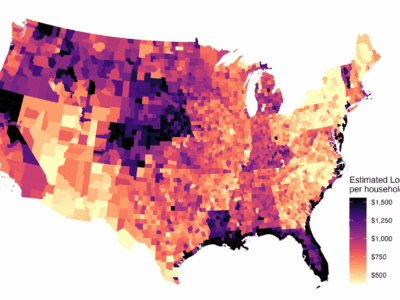Trading more LNG exports for more electricity transmission?
Recent Department of Energy report indicates that the trade may be worth it
In a series of recent posts (first post, second post, third post), I examined the permitting reform bill advanced by Senators Manchin and Barrasso in the last Congress. That permitting reform bill is now dead. But the reasons for doing a deal still remain. Decarbonizing the US economy requires a massive increase in renewable energy, and that in turn depends on building out the US electricity transmission network, which in turn depends on reducing regulatory obstacles (primarily state and local approvals) for transmission. As I described in those posts, the basic deal on offer in the Manchin and Barrasso bill was easing permitting for some fossil fuel projects (especially liquified natural gas (LNG) terminals) in return for federal preemption of at least some state and local regulation of important transmission lines.
As I noted in my second post, there was a lot of debate among environmentalists, renewable energy advocates, and climate scientists as to whether this deal was a good one from a climate policy perspective. The primary uncertainty was the level of greenhouse gas emissions that would be produced by facilitating more LNG exports, and whether those would outweigh the emissions reductions benefits from increased electricity transmission capacity. Some estimates of the greenhouse gas emissions from approval of additional US LNG exports were very high, with high end estimates of cumulative 11.5 gigatons of additional GHG emissions through 2050. Those estimates were cited by opponents of the deal.
In late December the Department of Energy released a long awaited report on the environmental and economic impacts of increased LNG exports. The Biden Administration had paused approvals of new LNG export terminals in part to allow for completion of more thorough analysis of those environmental and economic impacts. A major portion of that report assesses the greenhouse gas emissions impacts of expanded US exports of LNG, expansion beyond what is already approved and underway. (The summary report is here. An appendix with more details on the GHG analysis is here.) The greenhouse gas estimates in this report come with a much narrower range than prior estimates, ranging from no increases in greenhouse gas estimates (using very optimistic assumptions about global climate policies and deployment of carbon capture and sequestration technology) to a high-end estimate of 1.4 gigatons of additional GHG emissions through 2050. Importantly, these estimates are lower than not just the pessimistic estimates of opponents, but even the high-end estimates of supporters of the permitting reform deal. This report underscores that the deal on the table in the fall was likely a net win from a climate perspective. But the changed political context of 2025 means that any deal that might occur could be quite different. Hopefully, we can find a way forward to a deal that would advance transmission capacity in a way that produces a net win for climate policy in the US.







Reader Comments